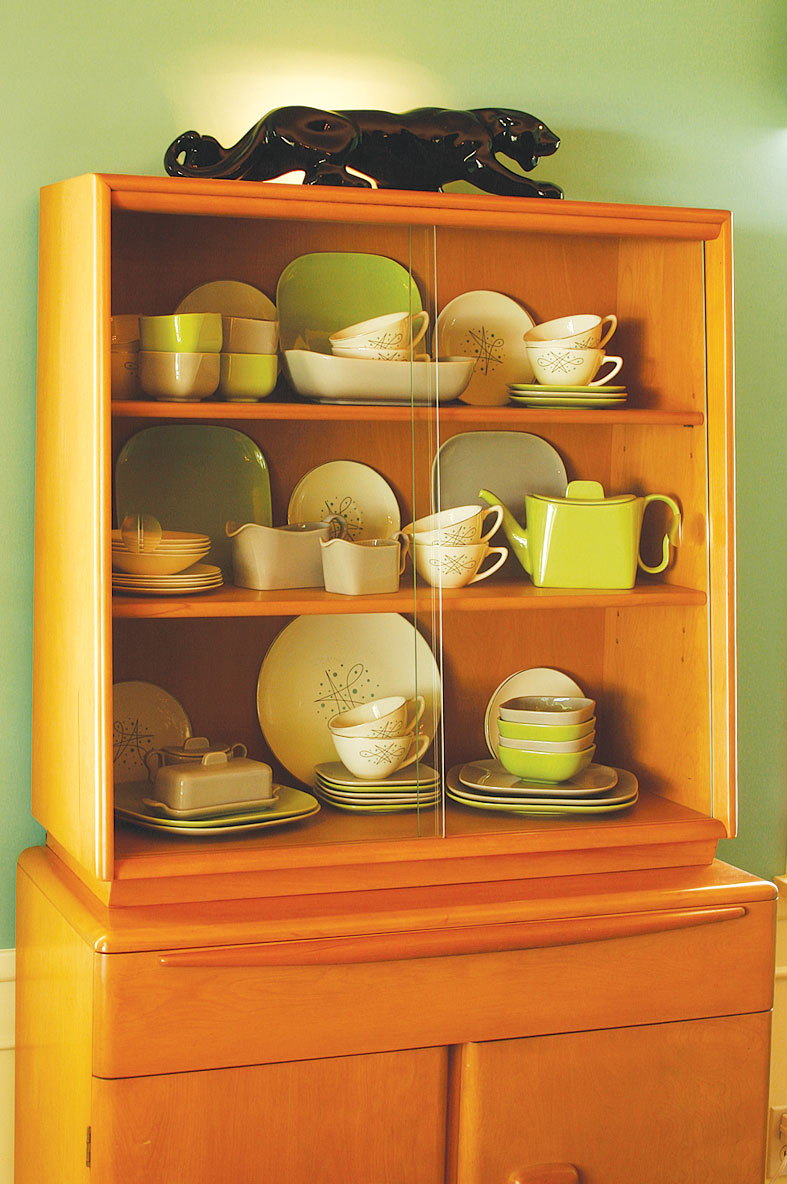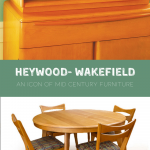With distinctive curved lines and a sleek look, Heywood-Wakefield furniture has found its way into many Mid Century Modern homes. What comes to mind for most of us are the “Modern” pieces produced by the company from roughly the 1930s to the early 1960s. These are the light “blond” pieces that are still so recognizable today. However, the origins of the company actually date back to 1826 and throughout the years they’ve created many different designs from school and theater seating to rattan décor to Early American style suites.
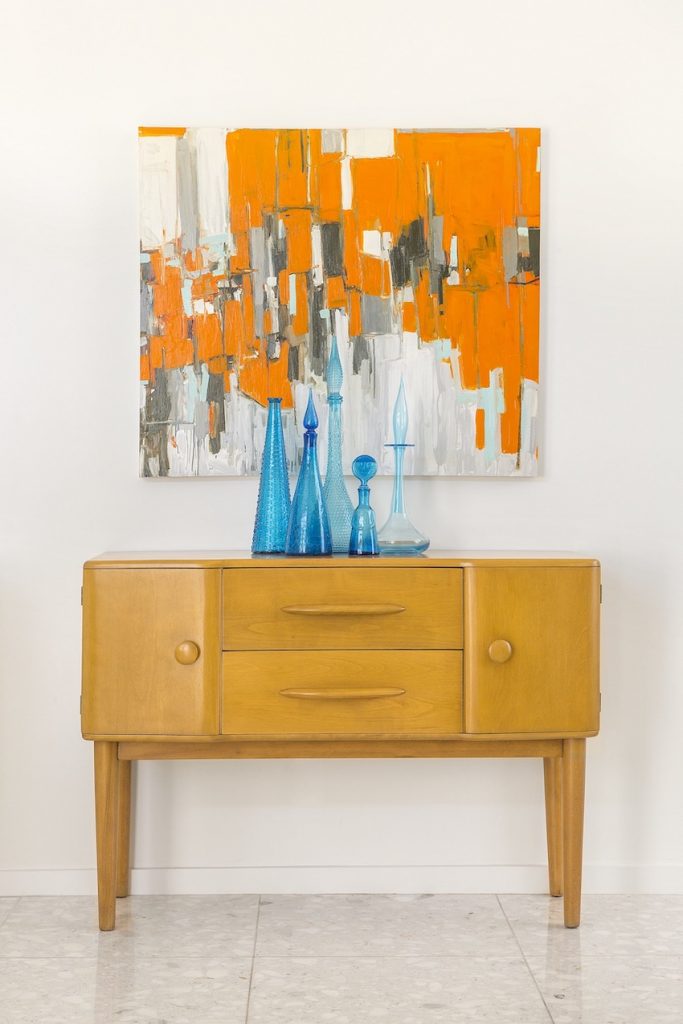
Heywood-Wakefield History
The five Heywood brothers began making chairs in 1826 and the company was formally introduced as B.F. Heywood & Co. in 1835. After going through several name iterations, the company eventually merged with Wakefield Rattan Company, Inc. in the late 1890s and eventually ended up as Heywood-Wakefield Co. in 1921.
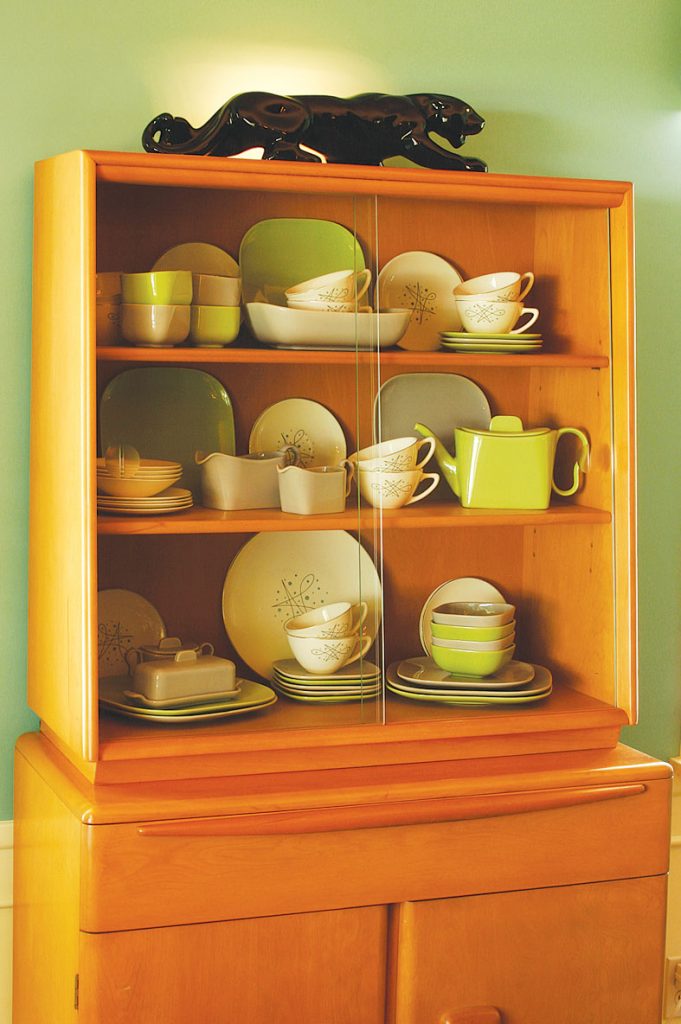
Until the 1930s, the company focused mostly on chairs, but they shifted to follow the growing interest in complete furniture suites for the home. Their styles shifted too, from Early American to Streamline Modern and Swedish Modern. Streamline Modern nodded to the aerodynamic design of the time, found in trains, cars, architecture and even appliances. In the late 1940s, Heywood-Wakefield style took on a more classic 1950s look, but most pieces still had the elegant curves and soft edging. As a side note, the company was also well known for its wicker and rattan furniture during the mid century!
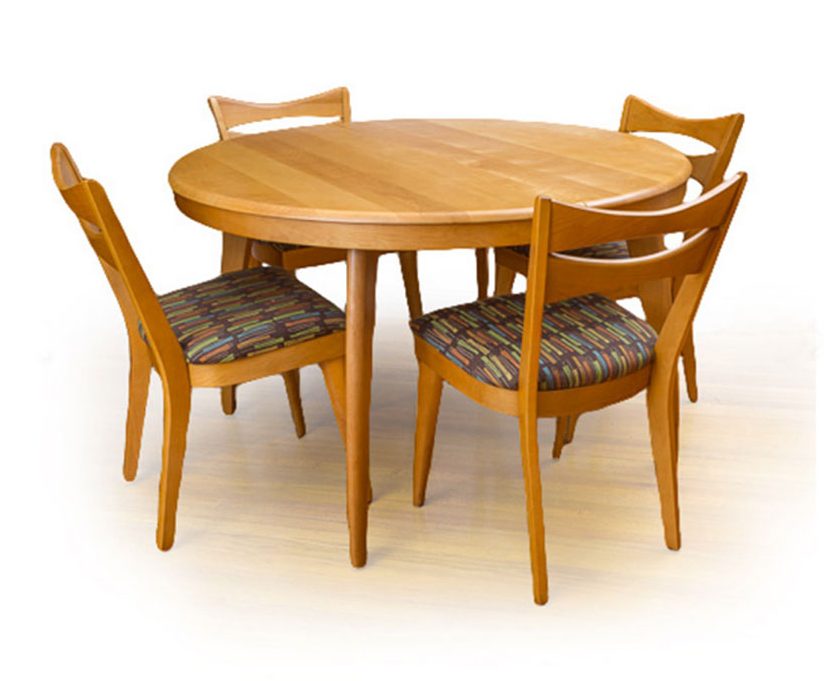
Ease of Design
Perhaps a drawing point for most collectors is that Heywood-Wakefield’s many different “Modern” styles look polished as a set, but also blend beautifully as individual pieces. Those visual variations are somewhat thanks to collaborations with noted designers of the time, from Gilbert Rhode to Russel Wright. Each collection has an individual look but can mix together thanks to an overall similarity in color, shape and style.
Beyond flexibility between styles, the pieces were meant to be versatile—multi-purpose pieces aimed to work in both small apartments and large houses. China hutches could be swapped to sit on different buffets, some vanities could double as desks, and so on.
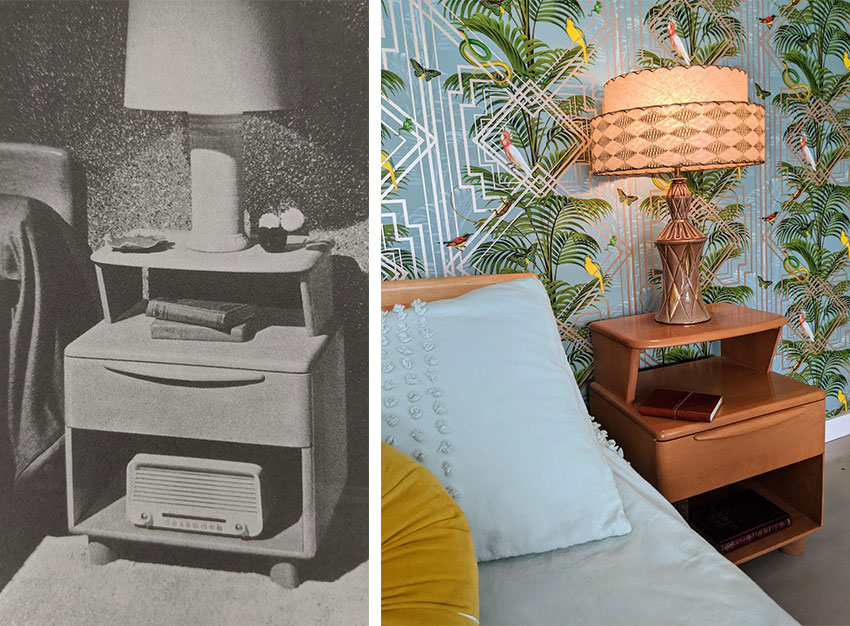
What is Steam Bending?
To achieve those gorgeous curves, Heywood-Wakefield utilized a method called “steam bending” for much of its Modern furniture as well as some other lines. The incredible reference book, Heywood-Wakefield Blond: Depression to the ‘50s by Schiffer explains how it’s done “The bending process began with dry stock, which was placed into machines called steam retorts. Inside, live steam saturated the wood until it was actually flexible enough to bend without snapping. Once the bending room crew determined that the wood had been saturated to the correct degree, the new pliable stock was removed from the steam retorts and bent into desired shapes either by hand or machine (hydraulic presses).” After sitting in a drying oven for 4-24 hours, the wood would be able to hold its curved shape.
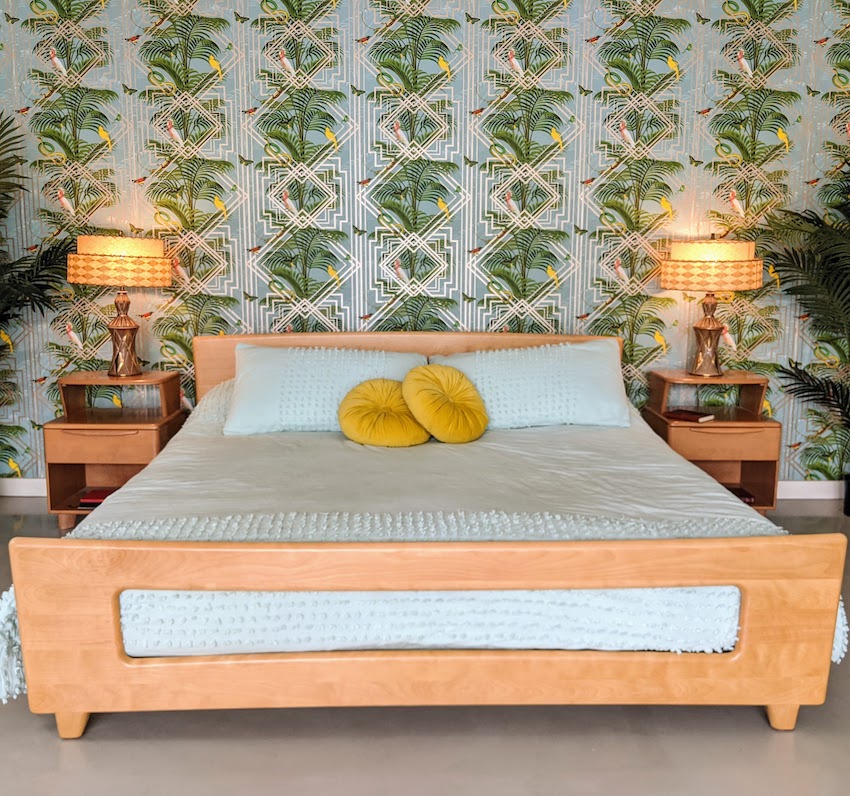
Heywood-Wakefield Identification
Many Heywood-Wakefield styles are easily identified by their shape and color. Most pieces, with the exception of a 1930s Streamline Maple line, are solid birch with a light finish. The finishes are usually Wheat, a slightly darker golden hue; or Champagne, a lighter paler finish with a hint of rose blush.
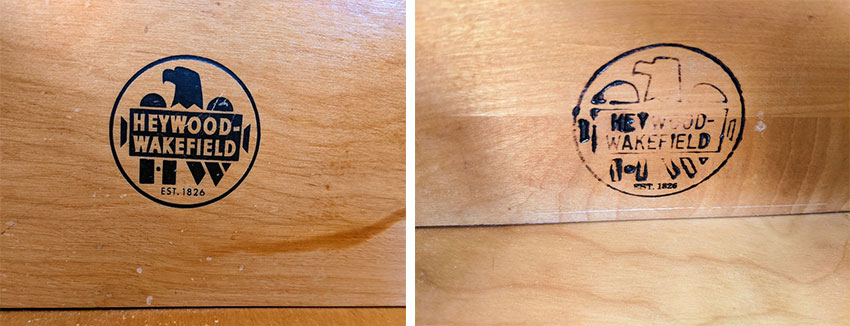
The iconic Eagle stamp helps to identify pieces made after 1949, here are some variations.
Heywood-Wakefield began using their eagle stamp in 1949, and it can usually be found on the left-hand drawer or underside of the décor. Earlier Streamline models had different types of paper tags, which are most likely gone by now, making these harder to confirm. Check out a helpful list of identification clues here for more information!
A New Option
Heywood-Wakefield closed in the late 1970s, however the rights were acquired by a furniture company in 1992. Today, they offer quality pieces made in the same spirit and main material as the vintage Heywood-Wakefield company. Their finish, called Amber, is lighter than the original colors, and has a more durable protective quality thanks to advances in finishing technologies. To learn more about the company, check out their website.
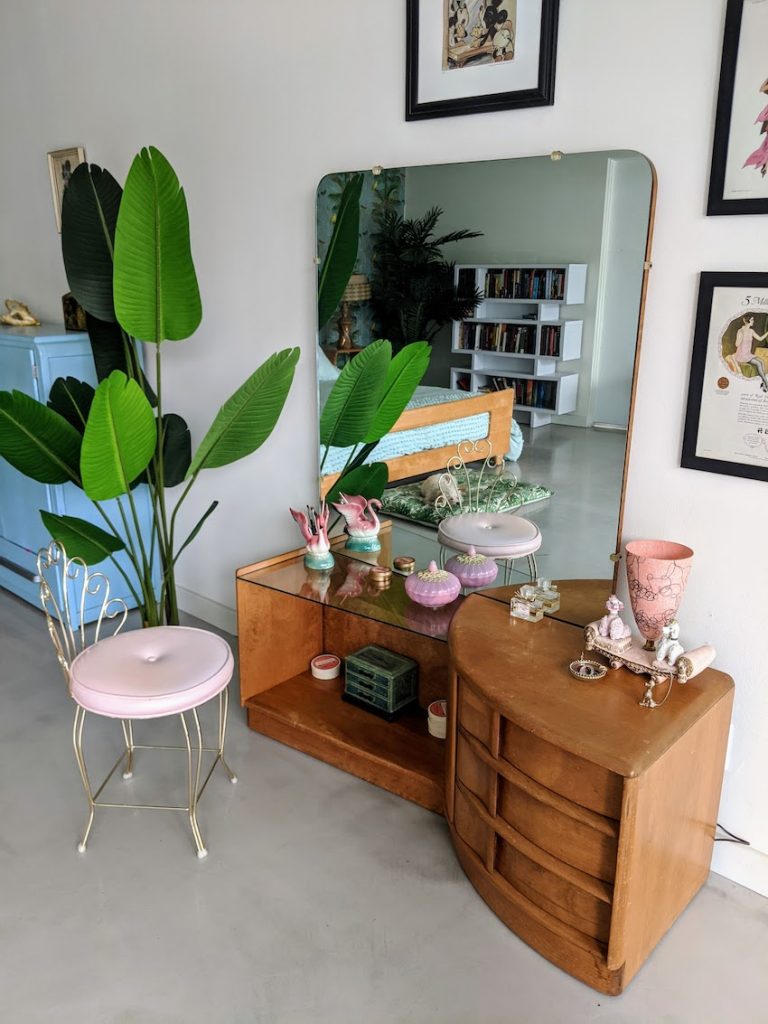
Happy hunting, whether it’s for vintage Heywood-Wakefield or new!
Looking for more mid century furniture reads? Check out this retrospective on Herman Miller.
And of course, don’t forget to follow us on Instagram, Facebook and Pinterest for more Atomic Ranch articles and ideas!

